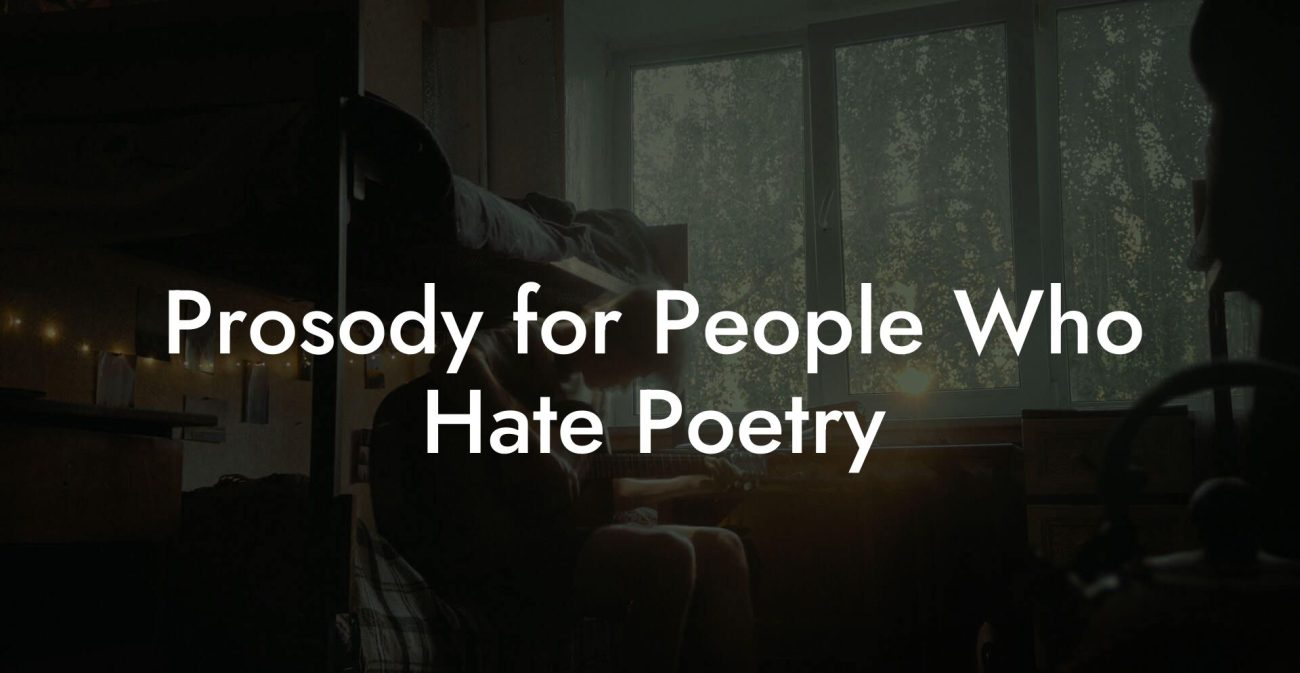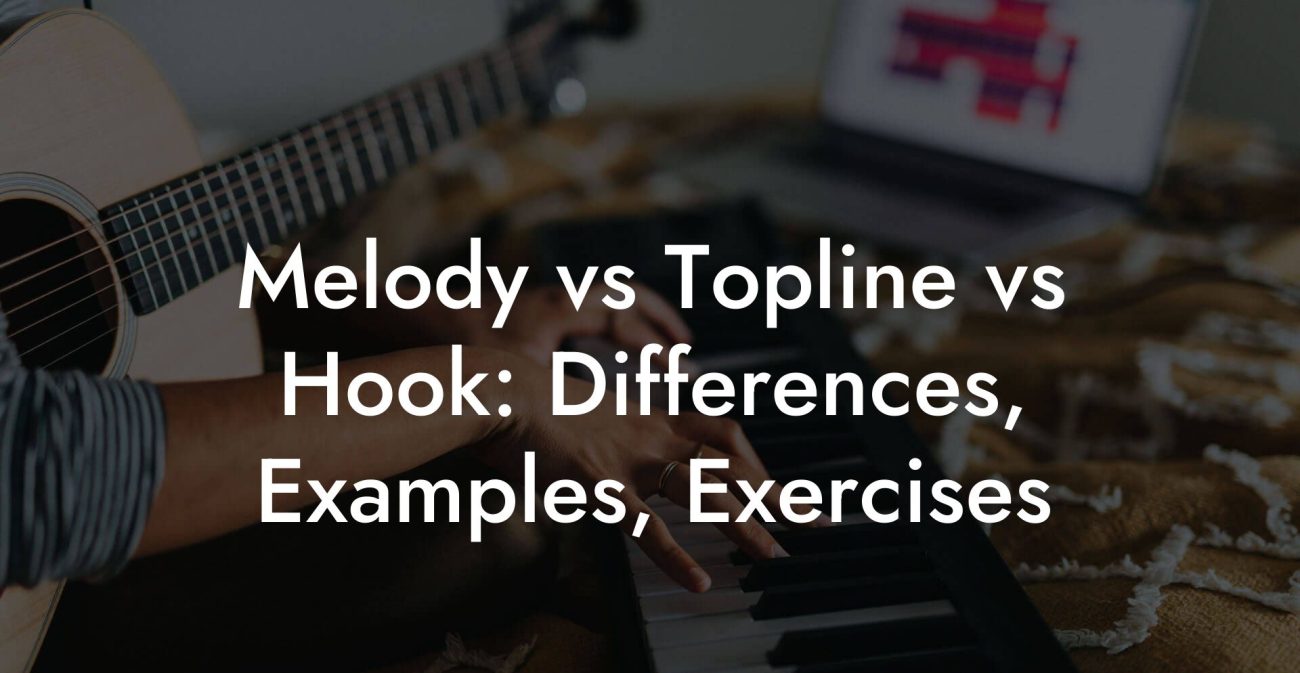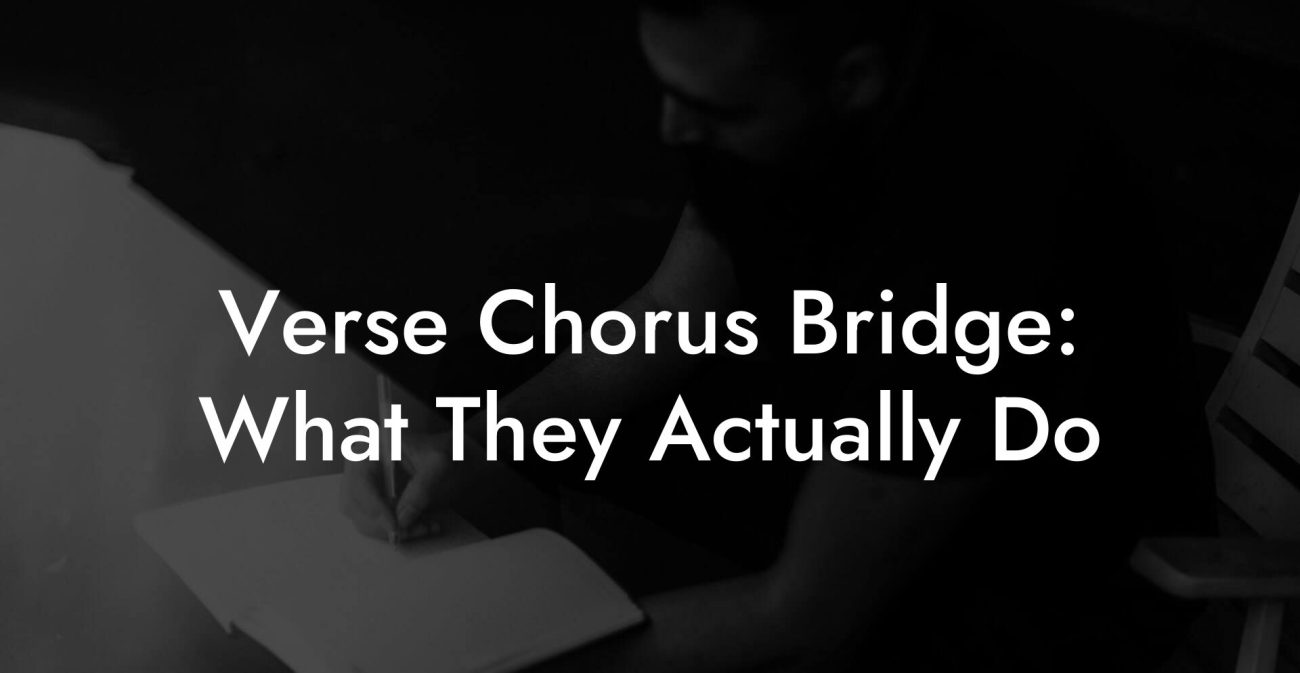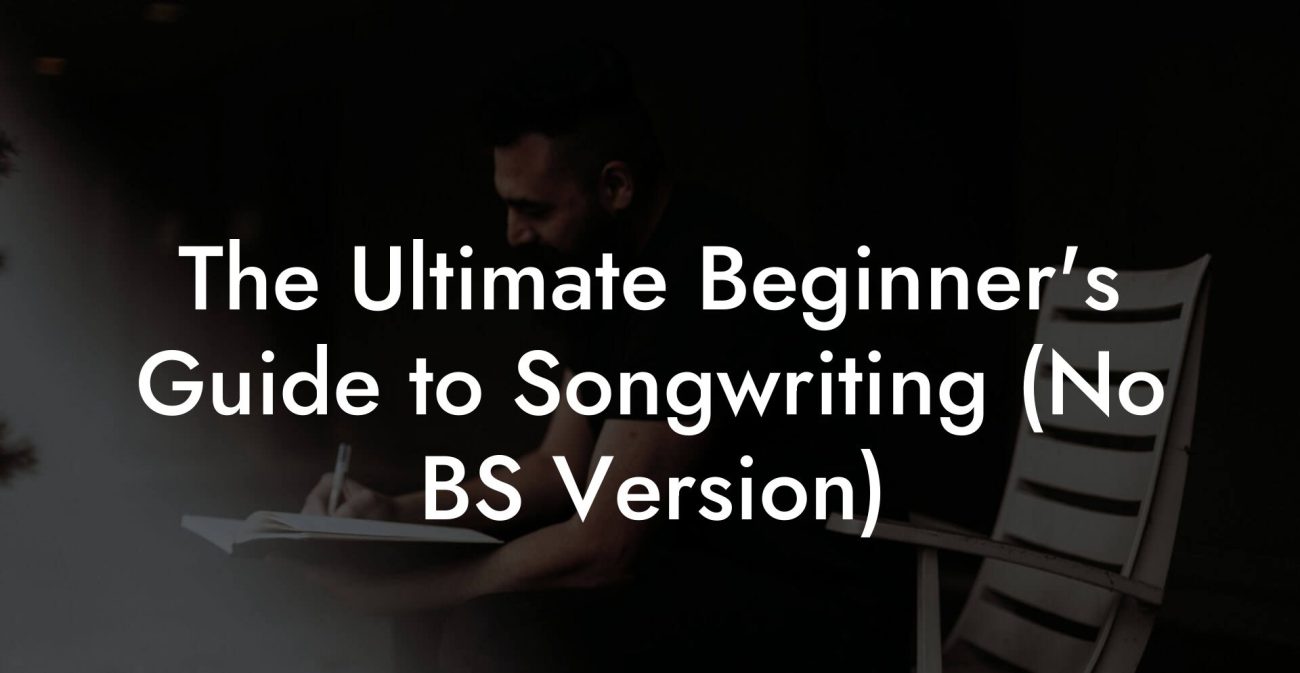Songwriting Advice
10 Song Structures That Don’t Suck

You want structure that carries emotion and makes listeners stay, stream, and sing along. This guide hands you ten song shapes that work in real life. Each entry gives a readable template, famous references so you know what this actually sounds like, a quick why it works bit, a common pitfall, and a tiny writing drill you can do on your phone while pretending to be productive. We also explain any jargon and acronyms so you do not need to text your producer and risk the blue ticks of shame.
Quick Interruption: Ever wondered how huge artists end up fighting for their own songs? The answer is in the fine print. Learn the lines that protect you. Own your masters. Keep royalties. Keep playing shows without moving back in with Mom. Find out more →
Quick Links to Useful Sections
- Terms you will see and what they mean
- How to read these templates
- Structure 1: Classic Verse then Pre chorus then Chorus
- Structure 2: Verse then Chorus then Verse then Chorus
- Structure 3: AABA classic
- Structure 4: Through composed or linear storytelling
- Structure 5: Verse then Pre chorus then Chorus then Post chorus then Verse then Chorus then Bridge then Double chorus
- Structure 6: Loop based dance structure
- Structure 7: Call and response structure
- Structure 8: Beat switch or section change impact
- Structure 9: Ballad long form with recurring motifs
- Structure 10: Modulation or key change buildup
- How to choose which structure fits your song
- Prosody, placement and other technical things explained in plain English
- Tiny rituals that help you finalize structure
- Common structure mistakes and how to fix them
- Action plan you can use tonight
- Relatable examples you may have lived
- Frequently asked questions
Everything here speaks millennial and Gen Z. We are hilarious when needed. We are brutally useful always. Expect spicy analogies, clear templates you can steal, and scenarios you will nod at because you were in that basement, on that bus, or in a shower singing quietly and judging your life choices.
Terms you will see and what they mean
- Verse A section that moves the story forward or adds new details. Think of it as the part where you set the camera on a new angle.
- Pre chorus A short rising section that creates pressure before the chorus. It is like the moment you step up to the mic and inhale deep.
- Chorus The emotional core of the song. The part people hum in the shower and send in group chat links.
- Post chorus A short repeated hook that follows the chorus like a trademark dance move.
- Bridge A contrasting section that offers new perspective. Sometimes called middle eight because it is often eight bars long.
- Hook Any super catchy melodic or lyrical idea. The chorus is often the hook. A short repeated phrase can also be the hook.
- Topline The melody and lyrics sung over a beat or chord progression. If you are the singer you are designing the topline.
- DAW Digital audio workstation. This is the software you use to record and arrange like Ableton Live, Logic Pro, or FL Studio.
- BPM Beats per minute. The speed of your song. 120 BPM is a comfortable middle ground for pop.
How to read these templates
Every template is shown as a flow of sections. Read them like a recipe. Under each template you get famous references so you can listen and feel the map. You will also get one tiny drill you can finish in ten minutes because finishing is the secret skill people do not teach in college.
Structure 1: Classic Verse then Pre chorus then Chorus
Template: Verse then Pre chorus then Chorus then Verse then Pre chorus then Chorus then Bridge then Chorus
Famous references: Kelly Clarkson "Since U Been Gone", Katy Perry "Teenage Dream", Adele "Rolling in the Deep" to varying degrees
Why it works: This is the pop backbone. The pre chorus pushes energy and the chorus gives release. The rule is tension then payoff. If your listener can feel the lift coming, the payoff lands like cheat codes on a 1 2 3 combo.
Common pitfall: Making the pre chorus too passive so the chorus does not feel like a release. If the pre chorus does not raise stakes it becomes decorative and your chorus will sound like it arrived via polite Uber.
Drill to try: Write a one sentence pre chorus that points at the chorus without naming the chorus word. Time yourself for five minutes. Then write the chorus in one line that reads like something a friend would text after an embarrassing date.
Real life scenario: You are in a late night rideshare and every lyric you write has to sound like it will fit between a streetlight and a confession. Use the pre chorus to make that streetlight flash like a drum fill.
Structure 2: Verse then Chorus then Verse then Chorus
Template: Verse then Chorus then Verse then Chorus then Bridge then Chorus
Famous references: Lorde "Royals", Nirvana "About a Girl" in its more stripped versions, John Legend "All of Me" in its basic form
Why it works: This structure throws the hook at the listener early. If your chorus is the song identity, front loading it gets attention fast. Perfect for streaming where you need to prove your case in the first minute.
Common pitfall: If your chorus repeats without new information the second time, listeners will feel like they are stuck on a loop inside a small mall.
Drill to try: Build a chorus first. Make it 8 to 12 words. Then write two verses that each reveal one specific detail that makes that chorus line make sense. Keep each verse to four lines.
Real life scenario: You only have three minutes before your city stops letting you park for free. Put the chorus on early so the listener remembers your song while they still remember why they left the house.
Structure 3: AABA classic
Template: A verse then another similar A verse then B bridge then final A
Famous references: The great old songs from Tin Pan Alley and early pop. Examples are The Beatles "Yesterday", Willie Nelson "Always on My Mind" in essence, and Judy Garland "Over the Rainbow"
Why it works: AABA focuses on a strong melodic A idea then offers contrast in a B section that deepens context. It is songwriting stripped to melody and storytelling. Use this when words and melody are the star and production must sit politely in the background.
Common pitfall: If the A section is not hooky enough the whole thing feels long. The A needs to be memorable because you will return to it and the return should feel inevitable.
Drill to try: Write an eight bar melody labeled A. Repeat it with a lyric that adds detail. Then write a B part that answers the question the A parts ask. Keep the B part short and melodically different.
Real life scenario: You are at a cafe writing on a napkin and you want to impress someone with one unforgettable line. AABA is your go to because clarity and melody beat gym levels of production.
Structure 4: Through composed or linear storytelling
Template: Verse then Verse then Verse then Coda or similar with minimal repeating chorus lines
Famous references: Queen "Bohemian Rhapsody", Bob Dylan "Hurricane", many long form folk songs and progressive tracks
Why it works: This is storytelling where the song unfolds like a short film. Use through composed when you have a narrative that progresses and when a repeating chorus would feel like repeating the same paragraph of a novel. It allows for dramatic change and scenes.
Common pitfall: Without repeated hooks listeners can lose the map. To avoid this add a small recurring motif such as a phrase or a melodic tag so the ear has a point of reference.
Drill to try: Outline a three act story in five sentences. Turn each sentence into a verse. Find one short line to repeat in act two and act three as a motif.
Real life scenario: You are telling your friend about the worst date of your life and it deserves an entire song not a chorus. Through composed gives honesty and detail room to breathe like real air in a crowded elevator.
Structure 5: Verse then Pre chorus then Chorus then Post chorus then Verse then Chorus then Bridge then Double chorus
Template: This adds a post chorus as a repeated hook after the chorus
Famous references: Carly Rae Jepsen "Call Me Maybe" with the melodic tag, Katy Perry "Firework" has moments that function as post chorus, and many modern pop songs with a chant or hook right after the chorus
Why it works: The post chorus gives you extra earworm real estate. If your chorus is lyrical and dense, the post chorus cleans up with a one line chant or syllabic melody that people can mimic easily.
Common pitfall: Overusing a post chorus can make the chorus feel unnecessary so make sure the post chorus enhances and does not replace your emotional core.
Drill to try: After you write a chorus, pick one word or short phrase from it. Build a very short repeated melodic tag from that word or phrase that can stand on its own.
Real life scenario: You are at a small gig and you need people to clap with you. That post chorus is the moment they can join in without memorizing the whole chorus. Give them something to clap for.
Structure 6: Loop based dance structure
Template: Intro hook then Verse with loop then Build then Drop then Breakdown then Drop
Famous references: Avicii "Levels", Swedish House Mafia "Don’t You Worry Child", Calvin Harris "Summer" and countless EDM and dance tracks
Why it works: DJs and dance fans love repetition with evolution. The loop gives a hypnotic bed and the build then drop cycle gives peaks and valleys. This is great for clubs and playlists where energy matters more than narrative.
Common pitfall: If the loop is boring the whole song is boring. Your loop must be distinct enough that layering percussion and synths feels like decorating a cake not repainting the cake.
Drill to try: Make a two bar loop with a melodic hook. Leave space in the second bar that you can fill later with a countermelody. Arrange a simple build into a drop where you remove an element one bar before the drop to create tension.
Real life scenario: You are in a small apartment with terrible speakers and great vibes. Make a loop that can be heard clearly through subpar sound because a strong loop survives bad tech and loud friends.
Structure 7: Call and response structure
Template: Hook line then answer then hook again then answer then bridge then hook
Famous references: James Brown classics, Otis Redding, Amy Winehouse touches this in live arrangements, mainstream pop examples include Bruno Mars tracks that use vocal call and response
Why it works: It invites participation. Call and response is social. It turns a song into a conversation and it gives your chorus or post chorus a live performative advantage.
Common pitfall: If the response is weak it feels like a bad joke. Make the response emotionally right and rhythmically strong so people want to answer back.
Drill to try: Take a short hook. Write a two line response that is either answering the question of the hook or repeating it in a new emotional color. Test it by clapping and saying the hook then the response out loud.
Real life scenario: You are at an open mic and you want the room to shout the last line back at you. Call and response is the easiest way to make strangers feel like your personal hype squad.
Structure 8: Beat switch or section change impact
Template: Intro then Verse then Chorus then switch to new beat and new vibe then second half continues with new arrangement and possibly new chorus
Famous references: Travis Scott "Sicko Mode" is famous for multiple beat switches, Beyonce and Jay Z collaborations often use section changes, and modern experimental pop borrows this idea to keep attention
Why it works: Changing the beat or vibe mid song grabs attention in a streaming era where listeners are tempted to scroll every eight seconds. It can also highlight a lyrical shift. Use it like a repositioning move when the song needs to change tone.
Common pitfall: If the switch is random it will confuse your listener. Make sure the lyrical content or emotional state justifies the change.
Drill to try: Write a verse and chorus. Then write a short section that would logically follow. Change the tempo by a slight amount or swap the drum pattern and write a new hook that fits the new space.
Real life scenario: You are producing a track and the vocal performance feels too comfortable. Add a beat switch to wake up your own ears and to give listeners something to retweet about.
Structure 9: Ballad long form with recurring motifs
Template: Verse then Verse then Chorus then Verse then Chorus then Coda with recurring melodic idea
Famous references: Leonard Cohen "Hallelujah", Adele ballads like "Someone Like You", many classic singer songwriter tracks
Why it works: Ballads need room to breathe. You use motifs so the ear has something to hold onto. A small instrumental or lyrical motif that returns creates cohesion across long form storytelling.
Common pitfall: Too many verses without change become static. Use subtle arrangement changes to give movement between verses.
Drill to try: Write a motif of two measures on piano or guitar. Return to that motif every time you mention a key image in the lyrics. Keep your chorus simple and emotive.
Real life scenario: You are on the phone with your ex at 2 a m and everything is dramatic. This is a ballad mood. Get the imagery sharp and use one motif like a ringtone in the lyric to tie memories together.
Structure 10: Modulation or key change buildup
Template: Verse then Chorus then Verse then Chorus then Build then Key change then Final Chorus then Repeat final chorus up a key
Famous references: Whitney Houston "I Will Always Love You" live versions and original, Beyonce "Love on Top" uses multiple upward key changes as a bright climax, classic pop songs from the 80s and 90s often use one key change to maximize emotional impact
Why it works: A key change raises energy and feels like a victory lap. It is dramatic and can elevate an already strong chorus into an unforgettable moment. It is risky because it exposes the singer but that is the point.
Common pitfall: Key changes that are used as a cheat to cover a weak chorus will be noticed. The mod should amplify real emotion, not cover a songwriting gap.
Drill to try: Take your chorus and sing it in the original key. Then sing it up a whole step. If your voice still carries the emotion the modulation will work in performance. If it strains, consider raising the chorus melody instead of the whole key.
Real life scenario: You are closing a show and you want your crowd to lose their minds. That key change is the popcorn cannon you pull out to launch confetti feelings from every chest.
How to choose which structure fits your song
Start by answering two tiny questions
- What is the emotional core of the song in one sentence
- Do you need story progression or repeated identity
If your answer to the second question is story progression pick AABA or through composed or long form ballad. If you want repeatability and earworm go with classic pop templates or post chorus templates. If you need dance energy pick loop based or build then drop. If you want social participation pick call and response or post chorus. If you want dramatic lift pick a key change. If you want shock and grab pick a beat switch.
Quick reality check: the same song can mix templates. Nothing says you cannot have a classic Verse Pre chorus Chorus and then use a beat switch in the third section. The best songs borrow what they need and leave the rest alone.
Prosody, placement and other technical things explained in plain English
Prosody means matching the natural stresses of speech to strong beats in the music. If a strong word lands on a weak beat your listener will feel friction like shoes on a wet floor. Speak each line at normal speed and mark the stressed syllables. Then match those with musical strong beats or longer notes. If the fit is clumsy rewrite the line or change the melody to let the thought breathe naturally.
If you see the acronym BPM you now know it stands for beats per minute. Faster BPM equals more pulse. If you see DAW you now know it is the software where you arrange this mess into a ship ready to sail.
Tiny rituals that help you finalize structure
- Make a one page map. Write section names and approximate time stamps. This keeps a song from ballooning like a taco gone wrong.
- Record a dry demo with your phone. If you can hum the hook into your camera you can explain your idea to collaborators without confusing gestures.
- Play the track for one honest human and ask one question. What line or moment stuck. That one answer will reveal whether your structure lets the best part breathe.
- Stop editing before you think you are done. Too much polishing kills honesty. Ship interesting, not sterile.
Common structure mistakes and how to fix them
- Too many ideas Focus on one emotional promise and let images orbit it like predictable satellites.
- Chorus that does not lift Raise the range or widen the rhythm or simplify the language so it reads like a badge you can shout.
- Pre chorus that feels pointless Make the pre chorus increase rhythmic density or sharpen language so the chorus releases real pressure.
- Beat switch that feels arbitrary Make sure the lyrical content or emotional arc justifies the switch. If it does not, adjust placement so it marks a real turning point.
- Modulation that strains the singer Try raising the chorus melody by a smaller interval or rewrite the line to accommodate a higher register.
Action plan you can use tonight
- Write one sentence that states your song core promise.
- Pick one structure from this list that supports that promise.
- Map sections on a single page and set a one hour timer to draft everything.
- Record a quick demo on your phone. Listen back and underline one line that must stay no matter what.
- Play it for one trusted person and ask what line stuck. Fix only the top three issues they name.
Relatable examples you may have lived
You wrote a song after a breakup while your phone still had their contact name auto complete. You used the classic verse pre chorus chorus. The chorus became your manifesto. You played it drunkenly at a karaoke and three people cried and one person tried to duet. That is structure working as therapy and product.
You built a two bar loop in your bedroom and your neighbor tapped the ceiling twice with approval. You dropped a different beat halfway for fun and now strangers on the internet want to make a glow up challenge from the switch. That is structure used to play and win.
Frequently asked questions
What structure should I choose for a first single
Choose the structure that gets the hook heard quickly. A classic verse pre chorus chorus or a verse then chorus then verse then chorus structure gets your identity to the listener fast. Front loading the hook is streaming friendly and helps playlist editors decide in the first minute.
Can I mix structures
Yes. Mixing structures is how many memorable songs are made. Combine a classic pop outline with a beat switch or a key change for an extra emotional lift. The only rule is clarity. If the song reads like it knows where it is going the listener will follow.
How long should my chorus be
Keep a chorus short enough to be repeatable and long enough to say the emotional core. Three to eight lines is common. Many great choruses are one compelling line repeated with slight variation. Think about what your listener can remember after one commute.
Do I need a pre chorus
No. Use one if you want a clear pressure built before the chorus. If your chorus can land without one do not add one just to look sophisticated. Add it when the chorus needs a rise to earn its impact.
What is a post chorus and do I need one
A post chorus is a short repeated hook that follows the chorus. You need one if your chorus is dense and you want an earworm that is instantly memorizable. It is especially useful for dance tracks and radio pop.





